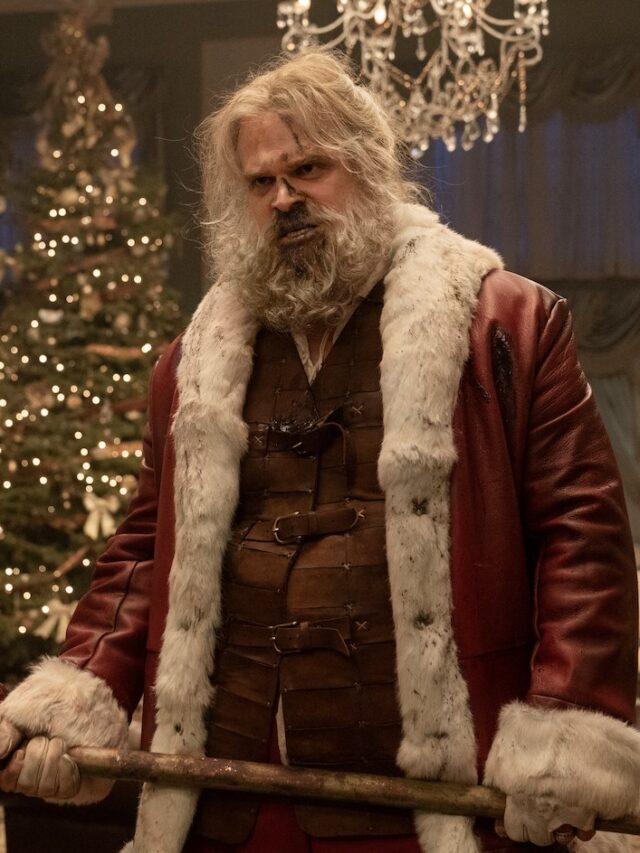The likelihood is that more people have heard about “The Turning” and its horrible finish than have actually watched it. The Turn of the Screw, a famous Gothic horror tale by Henry James, was the inspiration for the film “The Haunting,” which was originally titled “Haunting” and was intended to be Steven Spielberg’s triumphant return to the horror genre as a producer. Instead, it had a rocky pre-production, which resulted in the film’s original title, cast, and crew being abandoned before filming on a revised version of the project was to start under Floria Sigismondi’s supervision. After being delayed by 11 months to January 2020, “The Turning” failed to find an audience and earned generally negative reviews.
In the film, Mackenzie Davis plays Kate Mandell, a young woman who is hired to work as a governess for two children at their manor in the countryside of Maine after the passing of their parents in a car accident. Miles (Finn Wolfhard) and Flora Fairchild (Brooklyn Prince) are the two children. For the first two-thirds of the film, there is a decent (if uneven) mood piece; aside from a few awkward jump scares, Sigismondi is successful in giving “The Turning” a stylishly spooky aesthetic that is reminiscent of her grunge music videos from the 1990s and 2000s, and Davis portrays a person who is convincingly terrified as they are trapped in a spooky, possibly haunted house filled with nightmare fuel like sinister paintings The third act of the movie fails so miserably that it is difficult to appreciate much of what came before it.
The Ending of The Turning
As soon as Kate starts her new position, she notices the Fairchild children are not doing well and starts seeing the ghosts of their former live-in teacher, Miss Jessel, and horseback riding instructor Peter Quint. Kate learns that Peter sexually abused and killed Miss Jessel before dying in a tragedy planned by Mrs. Grose, the estate’s housekeeper, after receiving some unnerving artwork from her mentally ill mother, who lives in a facility.
The connection between Miss Jessel and Peter is shown in “The Turning” in a far darker light than prior adaptations, as those familiar with “Turn of the Screw” have undoubtedly noticed. It also indicates that, like Flora, who was traumatised by watching her parents’ deaths and losing Miss Jessel, Miles picked up a lot of his own toxic behaviour from Peter, whose spirit urges him to harass Kate. This explains why the lonely couple struggle but clearly long to connect with Kate, who is also troubled by the memory of her mother’s illness and her father abandoning her as a child. They even depart their home with Kate after Peter’s spirit kills Mrs. Grose.
Only they don’t. The events that followed Kate receiving her mother’s artwork, according to “The Turning,” were all the result of a vision that Kate experienced after hearing Mrs. Grose express her hope that her mother’s illness isn’t hereditary. Later, Kate begins to imagine visiting her mother after Miles and Flora make fun of her and claim they can’t see Peter’s ghost. But Kate screams when they turn around to face her.
The Turning’s Alternate Ending
In “The Turning’s” alternate conclusion, Peter’s ghost attacks Kate. Kate fights him off and chokes him until Flora runs in and begs her to stop. This version of the story was released by Universal on Blu-ray. The identity of “Peter” is subsequently revealed to be Miles, who initially appears to be dead (from Kate’s point of view) before a huge spider explodes from his mouth and brings him back to life. Flora hugs her brother and then Kate with a sense of relief as if nothing is wrong. Before the scenario finishes with Kate yelling, Miles, on the other hand, gives Kate a difficult-to-decipher look.
Although this alternative ending doesn’t miraculously resolve all the issues with “The Turning,” it feels more genuine than the original one and portrays Kate in a sympathetic light (as Sigismondi desired), but it avoids addressing the question of whether Miles was actually under Peter’s influence. That might have also been a unique approach for “The Turning” to differentiate itself from other, more acclaimed adaptations and update the uncertainty present in the supernatural aspects of James’ novella.
If you’re wondering why this conclusion was eliminated, it’s possible that Sigismondi thought it was too simple or even “pleasant” in comparison to “The Turn of the Screwclimax, “‘s in which Miles inexplicably dies after his governess protects him from Peter’s ghost. Stranger yet, the skin-crawling visual of Miles coughing up a spider appeared in the film’s official trailer, asking the question of when, precisely, it was abandoned. It’s a mystery and a jumble, much like so much of “The Turning.”
What the Heck Is That Supposed to Mean?
Naturally, Sigismondi has refrained from elaborating on the significance of the movie’s purposefully vague finale, telling Collider that it refers to “the conceptual idea of being shut in with this tragedy that you’re coping with.” She added that she wanted to “be gentle” with Kate and tell “a more emotional story” in order to subvert the Hysterical Woman trope that was prevalent when James wrote “Turn of the Screw.”
The meaning of Sigismondi is simple to understand. The characters in “The Turning” are all somehow “locked in” with their trauma, as was already mentioned. Due to the lack of the Internet and other related technology, Kate, Flora, and Miles are all the more alone in a home that is haunted by the spectres (literal or otherwise) of those who once lived there, which is why it’s important that the movie takes place in 1994.
However, “The Turning’s” abrupt and ambiguous finale does not enhance the film’s themes concerning abuse cycles and trauma. In contrast, it comes across as, at best, anticlimactic, and, at worst, makes the movie’s exploitation of sexual assault and mental illness as plot lines seem, in retrospect, exploitative. In addition, “The Twisting” directly portrays crucial scenes from a viewpoint other than Kate’s, such as Peter striking Miss Jessel in the prologue and a possessed mannequin turning its head. Therefore, when the movie’s conclusion implies that she may have made up the majority of the story, it simply furthers the confusion.
Being a binge-watcher himself, finding Content to write about comes naturally to Divesh. From Anime to Trending Netflix Series and Celebrity News, he covers every detail and always find the right sources for his research.










